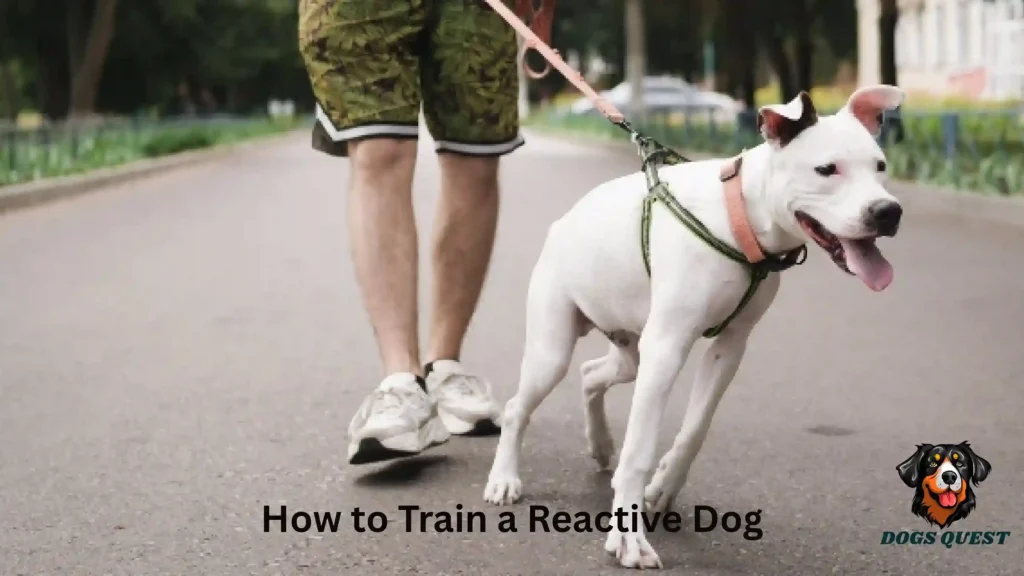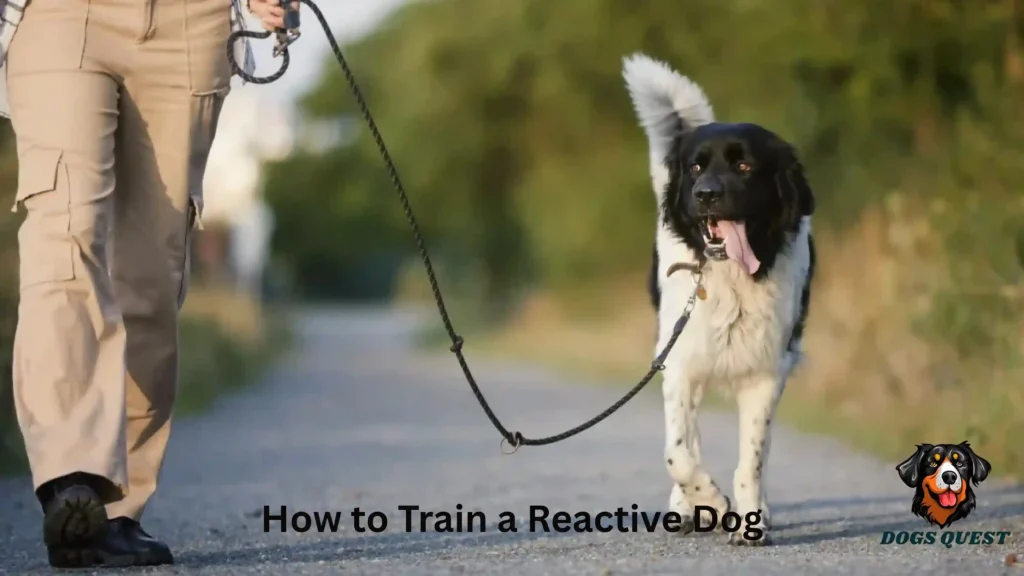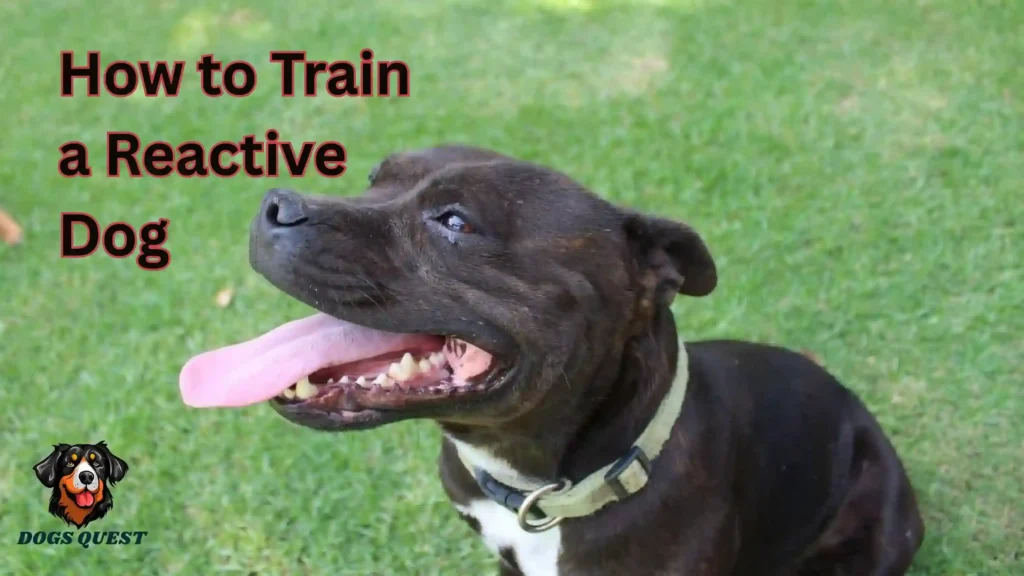Discover how to train a reactive dog with 10 proven steps. Learn positive reinforcement, desensitization, and expert tips to transform your reactive dog into a calm and confident companion.
Introduction
Living with a reactive dog can feel overwhelming at times. If your furry friend barks, lunges, or growls when they see other dogs, strangers, or certain triggers, you may often wonder how to train a reactive dog in the most effective and compassionate way. The good news is that with the right techniques, consistency, and patience, a reactive dog can learn to remain calm and controlled.
In this guide, we’ll explore 10 proven steps on how to train a reactive dog. These strategies are designed to help you manage reactivity, reduce stress for both you and your dog, and build a stronger, trusting bond. Whether you’re new to training or have tried different approaches before, this article will provide practical, research-backed tips to make your journey easier.
What Is a Reactive Dog?

Before learning how to train a reactive dog, it’s important to understand what reactivity actually means.
A reactive dog is one that overreacts to certain stimuli—like other dogs, people, noises, or objects. Instead of ignoring or calmly acknowledging these triggers, they may bark, lunge, growl, or display anxious behaviors.
Common Signs of Reactivity
- Excessive barking or growling
- Pulling hard on the leash
- Lunging toward other dogs or people
- Raised hackles or stiff body posture
- Intense staring or whining
Understanding these signs helps in developing a targeted plan for how to train a reactive dog effectively.
Why Dogs Become Reactive
Reactivity is not always aggression. It’s often rooted in emotions such as fear, frustration, or excitement. To know how to train a reactive dog, identifying the cause is essential.
Common Causes of Reactivity
- Lack of socialization: Dogs not exposed to various environments may feel insecure.
- Negative past experiences: Trauma or abuse can make dogs defensive.
- Genetics and temperament: Some breeds or lines are naturally more alert.
- Barrier frustration: Dogs on leashes or behind fences may react stronger.
Once you identify why your dog is reactive, it becomes easier to decide how to train a reactive dog using the right tools and strategies.
10 Proven Steps on How to Train a Reactive Dog

Let’s dive into the actionable steps you can follow.
1. Identify Triggers
The first step in learning how to train a reactive dog is identifying what sets them off. Keep a diary of situations where your dog reacts strongly.
Ask yourself:
- Is it other dogs, strangers, bikes, or loud noises?
- How close does the trigger need to be before your dog reacts?
Understanding these patterns is key to building a customized training plan.
2. Create Distance and Safety Zones
When beginning how to train a reactive dog, distance is your best friend. Keep your dog far enough from triggers so they stay below their reactivity threshold.
- Use quiet areas for walks.
- Cross the street when you see another dog.
- Step aside to give your dog space.
Distance helps reduce stress, making training more effective.
3. Use Positive Reinforcement
One of the most powerful techniques for how to train a reactive dog is rewarding calm behavior.
- Carry high-value treats.
- Reward your dog for looking at you instead of reacting.
- Mark calm behavior with a clicker or verbal cue like “Yes!”
Positive reinforcement teaches your dog that staying calm brings good things.
4. Desensitization and Counterconditioning
These two techniques are essential in how to train a reactive dog.
- Desensitization: Gradually expose your dog to triggers at a safe distance.
- Counterconditioning: Pair the trigger with something positive, like treats or play.
Example: If your dog reacts to other dogs at 30 feet, start training at 50 feet while rewarding calm behavior. Slowly reduce the distance over time.
5. Practice Focus Training
Teaching your dog to focus on you instead of the trigger is a vital skill in how to train a reactive dog.
Try commands like:
- “Watch me” – Your dog makes eye contact with you.
- “Leave it” – Redirects attention from distractions.
- “Touch” – Your dog touches your hand with their nose.
These cues help redirect your dog’s energy during tense moments.
6. Implement Structured Exercise and Mental Stimulation
A tired dog is a calmer dog. Part of learning how to train a reactive dog includes ensuring they have enough outlets for energy.
- Daily walks in quiet areas
- Puzzle toys and treat-dispensing games
- Scent work and nose games
- Obedience training sessions
Balanced physical and mental exercise reduces frustration and reactivity.
7. Use the Right Equipment
Proper tools play a big role in how to train a reactive dog safely.
Recommended gear:
- Front-clip harness to reduce pulling
- Sturdy leash for better control
- Head halter (if appropriate) for stronger dogs
- Long line for controlled training in open spaces
Avoid choke chains or prong collars, as they may increase fear and aggression.
8. Manage Your Own Emotions
Dogs are experts at reading human body language. If you tense up, your dog may react more strongly. A calm, confident handler is crucial in how to train a reactive dog.
Tips:
- Take deep breaths when a trigger appears.
- Keep your voice calm and encouraging.
- Practice relaxed leash handling.
Your energy directly influences your dog’s behavior.
9. Consistency Is Key
When it comes to how to train a reactive dog, consistency cannot be overstated. Every family member must follow the same rules, commands, and rewards.
- Practice daily, even for short sessions.
- Avoid reinforcing bad behavior (e.g., yelling or pulling back harshly).
- Stay patient—progress may take weeks or months.
10. Seek Professional Help if Needed
Sometimes, despite your best efforts, professional guidance is necessary for how to train a reactive dog. A certified trainer or veterinary behaviorist can provide customized strategies.
Look for trainers who specialize in positive reinforcement and behavior modification—not punishment-based methods.
Mistakes to Avoid When Training a Reactive Dog

When focusing on how to train a reactive dog, avoid these common errors:
- Punishing the dog for reacting (can worsen fear).
- Flooding the dog with too much exposure at once.
- Inconsistent training methods.
- Ignoring exercise and mental enrichment.
How Long Does It Take to Train a Reactive Dog?
Every dog is different. For some, you may see progress in a few weeks. For others, it can take months of consistent training. The key in how to train a reactive dog is patience and celebrating small wins along the way.
Final Thoughts
Learning how to train a reactive dog requires patience, empathy, and consistency. By identifying triggers, using positive reinforcement, practicing desensitization, and staying calm yourself, you can transform reactivity into confidence.
Remember, progress may feel slow, but every step forward matters. Whether you handle the training yourself or seek professional guidance, your efforts will create a happier, calmer life for both you and your dog.
FAQs About How to Train a Reactive Dog
Q1. What is the best way to train a reactive dog?
The best way to train a reactive dog is through positive reinforcement, desensitization, and counterconditioning. These methods help your dog learn that triggers aren’t threats and staying calm leads to rewards. Avoid punishment, as it can worsen fear and aggression.
Q2. Can a reactive dog ever be cured?
Reactive dogs may not be fully “cured,” but with consistent training, they can learn to manage their emotions and respond calmly. The goal in learning how to train a reactive dog is progress, not perfection—many dogs improve dramatically over time.
Q3. How long does it take to train a reactive dog?
Training timelines vary depending on the dog’s history, age, and consistency of practice. Some dogs show progress in weeks, while others may take months or even longer. Patience and consistency are key when learning how to train a reactive dog.
Q4. Should I use a trainer for a reactive dog?
Yes, working with a certified dog trainer or veterinary behaviorist can be very beneficial. They provide personalized strategies for how to train a reactive dog safely and effectively. Always choose trainers who use positive reinforcement methods.
Q5. What equipment is best for training a reactive dog?
When learning how to train a reactive dog, a front-clip harness or head halter works best. These give you more control while being humane. Avoid choke chains or prong collars, as they can increase stress and make reactivity worse.

